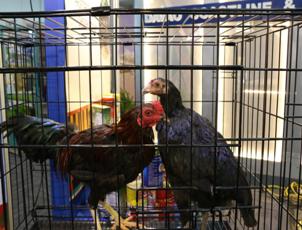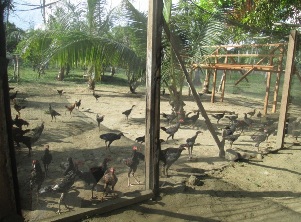 The enhancement of the potential of the native chicken industry is being showcased at the Davao Agri Trade Expo (DATE), among other exhibits, through the Western Mindanao Agriculture, Aquatic and Natural Resources Research and Development Consortium (WESMAARRDEC).
The enhancement of the potential of the native chicken industry is being showcased at the Davao Agri Trade Expo (DATE), among other exhibits, through the Western Mindanao Agriculture, Aquatic and Natural Resources Research and Development Consortium (WESMAARRDEC).
Geared towards the development of the agriculture industry in Davao Region, the three-day event will be held on September 22-24 at SMX SM Lanang Premier, Davao City.
DATE 2016 features Mindanao’s golden crops and is packaged to cover the basic aspects of a successful agriculture extending beyond production to cover financing, processing, marketing, and even exporting.
Any Filipino gourmet will readily attest to native chicken’s fine qualities. Its unique taste, flavor and texture, and health benefits, makes it a fine choice for most consumers. It is, therefore, not surprising if the demand for it, especially by institutional buyers, continually increases.
With the vast potential of native chicken and its attending challenges, the Philippine Council for Agriculture, Aquatic and Natural Resources Research and Development of the Department of Science and Technology (DOST-PCAARRD) crafted the Industry Strategic S&T Program (ISP) for Native Chicken.
The program primarily addresses two major challenges─unstable supply of slaughter native chickens and high mortality rate. It also looks into how they can be improved for the benefit of rural farmers in Regions 5, 6, 7 and 9, which are known for their native chicken breed.
True-to-type breeding populations of Camarines in Bicol, Boholano in Bohol, and Zampen native chicken in Zamboanga Peninsula were developed under the program. As initial foundation, two hundred thousand heads of breeder quality day-old chicks and one hundred thousand heads of quality day-old chicks for slaughter were also produced.
 The purification process resulted in higher production performance in terms of age and weight, age at point of lay, eggs produced per hen, average egg weight, hatchability, plumage uniformity, and survival rate of breeder chickens.
The purification process resulted in higher production performance in terms of age and weight, age at point of lay, eggs produced per hen, average egg weight, hatchability, plumage uniformity, and survival rate of breeder chickens.
Also developed under the program are the appropriate free range management technologies for the most common native chicken farming systems in Bicol, Bohol, and Zamboanga and a breeding and free range production protocols for the four native chicken strains: Darag, Camarines, Boholano, and Zampen.
Information on pricing and marketing as well as on current policy support systems was also generated under the program for native chicken producers and policy makers.
With the development of ethnobotanical anthelmintics for gastro-intestinal parasitism, the program has also addressed the high cost of commercial veterinary anthelmintic and its unavailability in the countryside.
Local production of oil-emulsion Newcastle Disease (NCD) vaccines was also pursued under the program to control the annual NCD outbreaks that cause about 90% mortality in infected native chicken floc.
